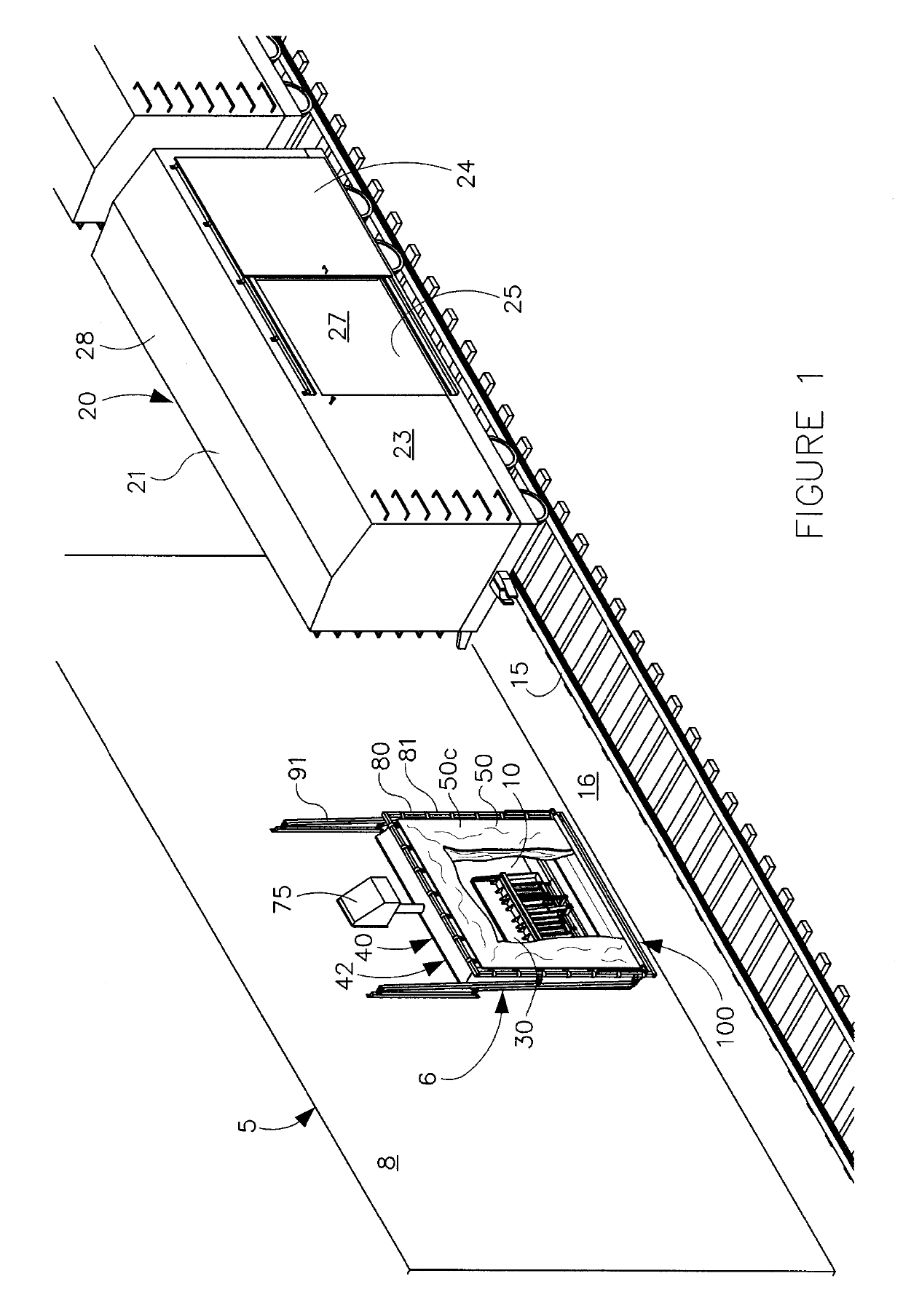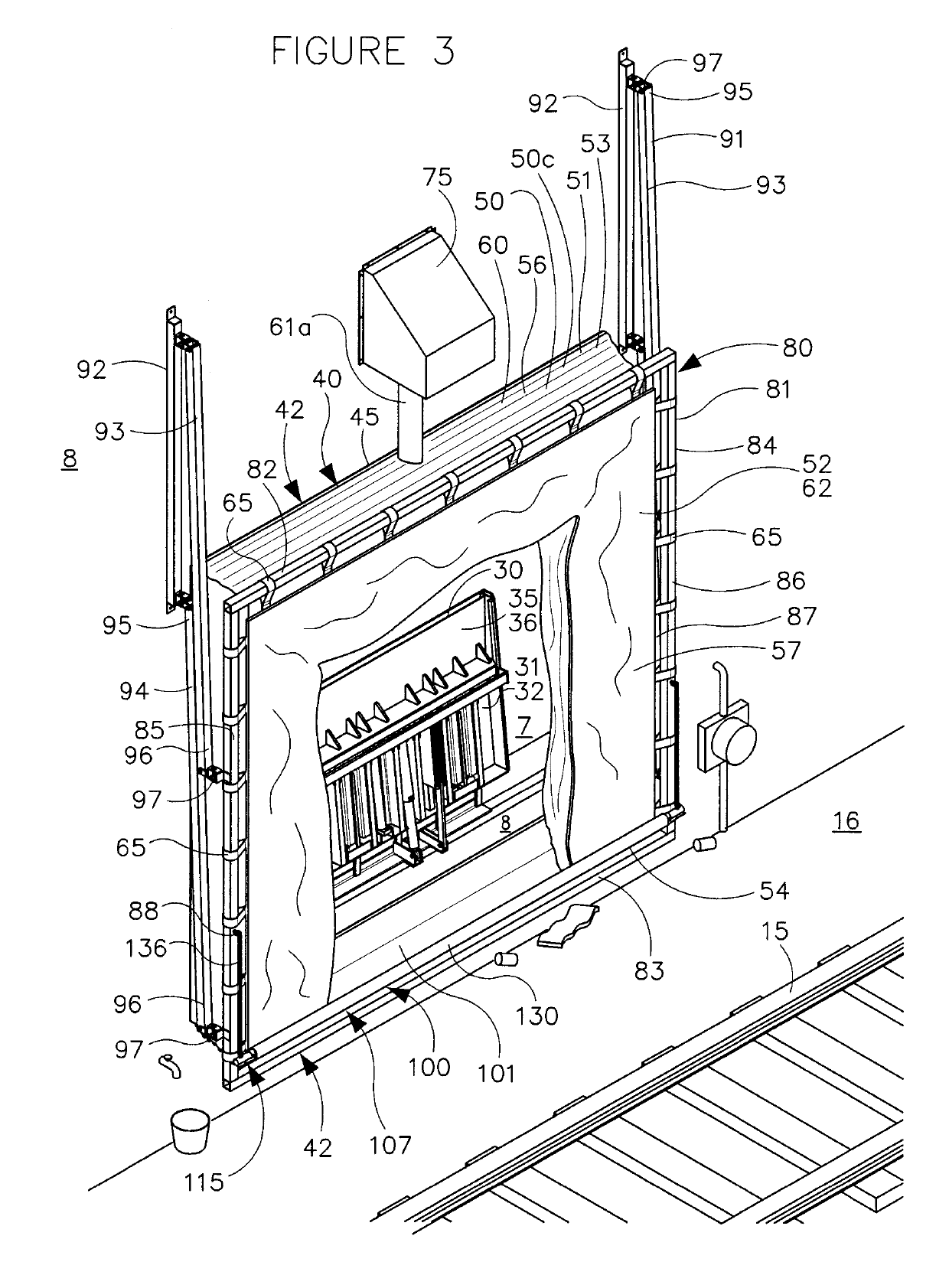Loading dock rail shelter
a dock rail and rail shelter technology, applied in the direction of loading/unloading, aircraft components, ground installations, etc., can solve the problems of not holding the entire canopy against the building wall, maintaining the required clearance,
- Summary
- Abstract
- Description
- Claims
- Application Information
AI Technical Summary
Benefits of technology
Problems solved by technology
Method used
Image
Examples
Embodiment Construction
[0035]While this invention is susceptible to embodiment in many different forms, the drawings show and the specification describes in detail a preferred embodiment of the invention. It should be understood that the drawings and specification are to be considered an exemplification of the principles of the invention. They are not intended to limit the broad aspects of the invention to the embodiment illustrated.
[0036]Modern commercial buildings 5 for manufacturing, warehousing, distributing and selling goods are equipped with loading docks or bays 6 to efficiently move goods, supplies, furniture, equipment and other forms of cargo in and out of the building. The loading docks 6 have a generally flat, horizontal, elevated floor surface 7 relative to its generally vertical and planar exterior walls 8 to define the interior 9 of the building 5 as shown in FIG. 1. The loading bay 6 has an elevated doorway or opening 10. A door such as an overhead door (not shown) is used to selectively o...
PUM
 Login to View More
Login to View More Abstract
Description
Claims
Application Information
 Login to View More
Login to View More - R&D
- Intellectual Property
- Life Sciences
- Materials
- Tech Scout
- Unparalleled Data Quality
- Higher Quality Content
- 60% Fewer Hallucinations
Browse by: Latest US Patents, China's latest patents, Technical Efficacy Thesaurus, Application Domain, Technology Topic, Popular Technical Reports.
© 2025 PatSnap. All rights reserved.Legal|Privacy policy|Modern Slavery Act Transparency Statement|Sitemap|About US| Contact US: help@patsnap.com



